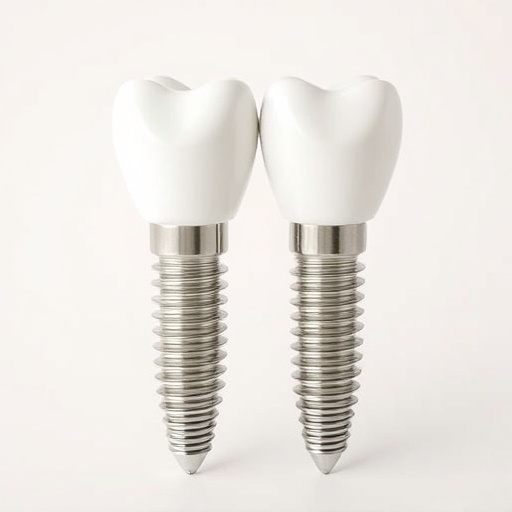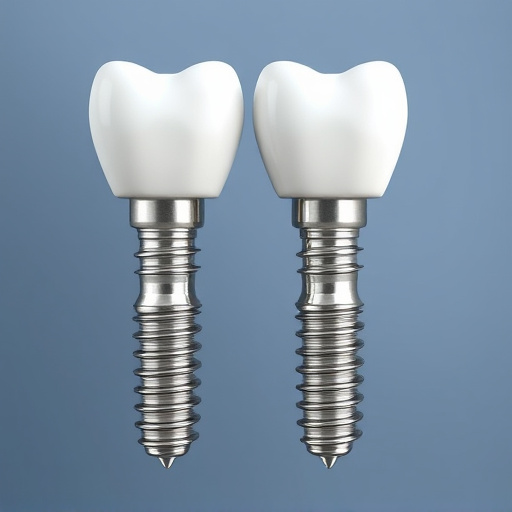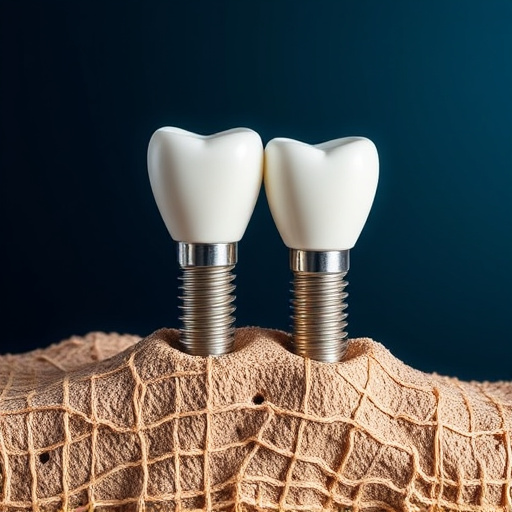Bone grafting treatment is a crucial process for dental implant surgery, addressing jawbone loss or deterioration. It involves placing bone substitute materials to stimulate new bone growth, providing stability for implants. This meticulous procedure, including assessment, bone harvesting/substitutes, placement, healing, and implant insertion, ensures robust jaw health for long-term restorations like clear aligners or artificial teeth. Despite risks, bone grafting is a game-changer in restorative dentistry, particularly for resorbed bones caused by tooth loss.
Bone grafting treatment is a crucial procedure in dental implant preparation, offering a path to successful and stable implants. This comprehensive guide delves into the intricacies of bone grafting for dental implants, explaining the process, benefits, and risks. Understanding bone grafting enhances patient awareness, empowering them to make informed decisions regarding their oral health. By exploring each step and consideration, this article provides valuable insights for those undergoing or contemplating this transformative treatment.
- Understanding Bone Grafting for Dental Implants
- The Bone Grafting Process Step by Step
- Benefits and Risks of Bone Grafting Treatment
Understanding Bone Grafting for Dental Implants

Bone grafting treatment plays a pivotal role in preparing the jawbone for successful dental implant placement, especially after tooth loss or severe bone deterioration. This advanced procedure involves strategically placing a bone substitute material into the jawbone to promote new bone growth and create a solid foundation for implants. By integrating with the existing bone structure, these grafts stabilize the implant, ensuring its long-term success.
In general dentistry, understanding bone grafting is crucial for patients undergoing dental implant procedures. It not only enhances the stability of the final restoration, such as clear aligners or artificial teeth, but also prevents further bone loss and maintains the overall health and structure of the jawbone.
The Bone Grafting Process Step by Step

Bone grafting treatment is a meticulous process designed to restore oral health and prepare for dental implants. The procedure involves several precise steps:
1. Initial Assessment: A dentist or oral surgeon will evaluate your mouth, taking X-rays to determine bone density and identify any gaps where tooth loss has occurred. This step is crucial in planning the grafting method and determining the right amount of bone material needed.
2. Bone Harvesting: In many cases, bone material for grafting is harvested from another part of your body, such as the jaw or hip. Alternatively, synthetic bone substitutes can be used. The harvested bone or substitute is shaped to fit the gap precisely, ensuring a strong foundation for the implant.
3. Graft Placement: The prepared bone graft is carefully inserted into the designated area, often using surgical instruments to ensure proper placement and contact with existing bone. This step facilitates bone regeneration and serves as a solid base for the future dental implant.
4. Healing Phase: After grafting, a period of healing begins. During this time, the grafted bone integrates with the natural bone structure, fostering new blood vessel growth and strengthening the foundation for the planned dental implant. This phase requires comprehensive dental care, including proper oral hygiene to maintain the health of the graft site.
5. Implant Placement: Once the bone graft has healed and fused (a process known as osseointegration), the dentist can proceed with placing the dental implant. This involves surgically inserting a titanium post into the now-solidified bone, which serves as an artificial root for the tooth replacement.
6. Restoration: Following implant placement, a custom-made crown is attached to the implant, completing the restoration and providing a functional, aesthetic, and long-lasting solution for tooth repair, enhancing comprehensive dental care.
Benefits and Risks of Bone Grafting Treatment

Bone grafting treatment is a crucial procedure in preparing for dental implants, offering multiple benefits for patients undergoing restorative dentistry. This advanced technique involves the strategic placement of bone material to enhance the quality and quantity of existing bone structure, which is essential for successful implant integration. One of its key advantages is the ability to improve osseointegration, ensuring a strong connection between the implant and jawbone, thus increasing the long-term success rate of the procedure. This is particularly beneficial for patients with resorbed or atrophied bones, commonly observed in those who have experienced tooth loss for an extended period.
However, as with any dental treatment, bone grafting also carries certain risks. Complications may include infection, bleeding, and in rare cases, failure of the graft to heal properly. Additionally, patients should be aware that this procedure is often more complex than routine oral exams or general dentistry procedures, requiring precise execution and specialized knowledge. Despite these potential drawbacks, when performed by qualified dental professionals, bone grafting treatment remains a game-changer in preparing for dental implants, enabling many individuals to achieve optimal results in restorative dentistry.
Bone grafting treatment plays a vital role in preparing dental implants, ensuring successful long-term outcomes. By understanding the process and its benefits, patients can make informed decisions about their oral health. This advanced procedure offers a reliable solution for those seeking to restore their smile and bite function. With careful consideration of potential risks, bone grafting can revolutionize dental implant therapy, providing a strong foundation for artificial teeth that mimic natural ones in both form and function.














